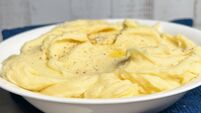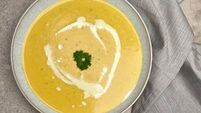Currabinny Cooks: Seaweed offers nutrition and endless possibilities

As an island, seaweed is in no short supply but it is only relatively recently that we are properly starting to appreciate the endless possibilities that seaweed has in terms of nutrition and taste.
The main edible seaweeds found along our coasts are dulse, carrageen, kelp, Irish wakame and sea lettuce.
Almost solely associated with Japanese cuisine, seaweed is generally only known in Irish households in the form of carrageen moss which is used like gelatine to make a pannacotta or blancmange-style pudding.
Thankfully, we are starting to really appreciate seaweed and how versatile it is in its many variants and seemingly boundless nutritional benefits.
Producers such as AlgAran, Irish Seaweeds and Wild Irish Seaweed are supplying dried organic seaweed and seaweed products to many supermarkets, wholefood stores and healthfood stores.
In our cooking we mainly use dillisk, wakame and kombu which each bring their own unique qualities to your eating experience and so should be used accordingly.
Dillisk is purple, sometimes deeply so. It has a wonderful balance of smokey notes and vegetal, salty savoury notes.
It works great, reconstituted and blended into a hummus, it’s fresh salinity, of the sea but never fishy, makes for a really special flavour.
We also bake it into bread, like our seeded dillisk loaf. Baking dillisk makes it deeply smokey, woody almost like bacon-like.
Wakame on the other hand is very green, very of the sea, being bright, salty and fresh tasting. We usually would pair this with seafood.
The pesto we make with kale and cashew nuts works wonderfully as a crust for baked white fish but works fine as well just on a cracker.
Be careful with wakame however, when overused it can become too fishy.
Kombu is black/dark brown and comes in large ribbons, dried out. It is a bit tougher and thicker than the other two seaweeds so required a little more preparation.
We tend to either use a good kitchen scissors to cut it into little pieces.
You could blitz it using a spice blender, smash it to pieces in a pestle and mortar or reconstitute it and chop it up with a large kitchen knife.
Kombu can be thrown into a bread like the dillisk loaf, or even something like a focaccia.
We like to make a simple butter using very finely ground or chopped kombu, garlic, lemon juice and a little parsley.
This butter is great for spreading onto your dillisk loaf for a seaweed-on-seaweed experience.
Seeded Dillisk Loaf
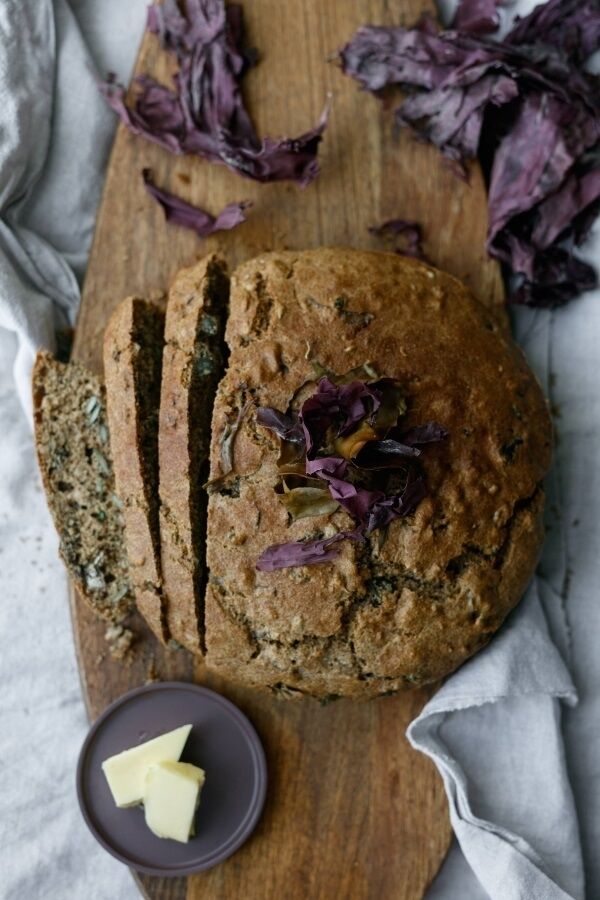
This is up there with our favourite breads to make and eat.
The combination of seeds, buttermilk and wonderful, earthy, salty, Dillisk make for a truly different bread experience, both in flavour and in how it looks.
The beautiful veins of purple which run through the bread makes it a beautiful eating experience.
This is a traditional Irish soda bread but with dried purple dillisk thrown into the mix resulting in a deliciously salty and savoury bread which we slice and spread with earthy kombu butter for good measure.
We first made this to sell at markets and it became one of our staples, always selling out early.
Preheat the oven to 230C
Mix the flour, seeds, chopped dillisk, bread soda and salt in a large mixing bowl.
In a large jug, whisk the buttermilk, egg and oil and pour into the dry ingredients.
Make your hand into a claw and stir the mixture in circular motion until it is well combined.
Pour into a buttered circular baking tin and bake for 40 – 45 minutes.
We like to garnish it with a large feathery piece of dillisk stuck to the top of the loaf which will dry out and turn into a delicious seaweed crisp.
When baked, Remove from the tin and pat the bottom, it should sound hollow. Cool on a wire rack.
The resulting bread should be nicely risen, dense but not doughy, flecked with seeds and purple dillisk.
Kale Cashew & Wakame Pesto
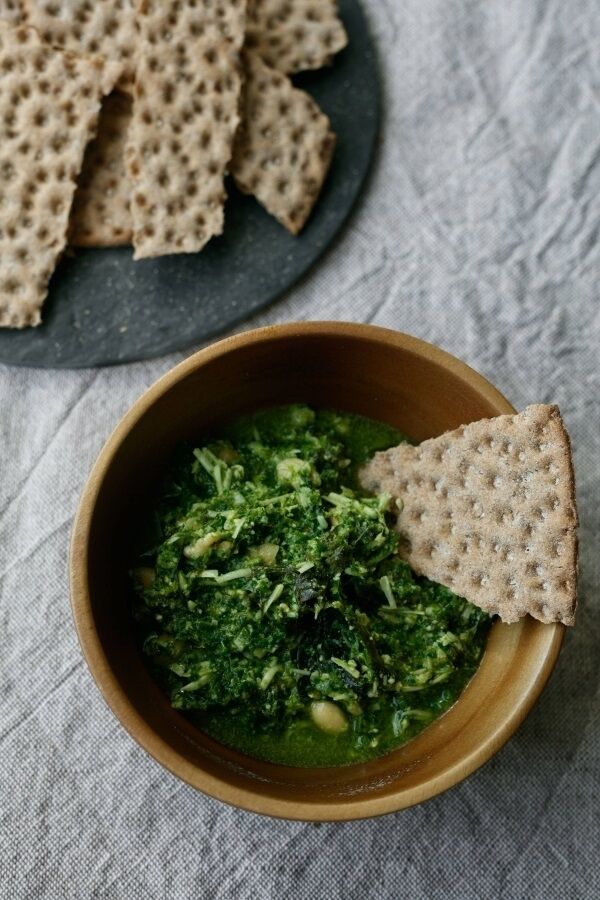
I often feel sorry for curly kale which is far uglier than the more noble and trendy cavelo nero, red Russian or lacinato variaties.
It is however the kale which we all probably avoided and then slowly embraced as we grew up, pretending to enjoy it raw covered in lemon juice (which was never going to do to soften the tough curly kale).
Kale is wonderfully good for you and in our humble opinion is best eaten cooked except in this one circumstance where is is blitzed with oil, cheese, lemon juice and nuts to create a delicious peppery pesto which brims with goodness and flavour.
The addition of wakame seaweed gives the pesto a coastal flavour of salt and sea
Add all the ingredients to a food processor and whizz until well combined but not too processed.
Add more oil to loosen up the mixture if needed.
Add to pasta, soups or dollop atop a cracker.
Beetroot Hummus with Dillisk
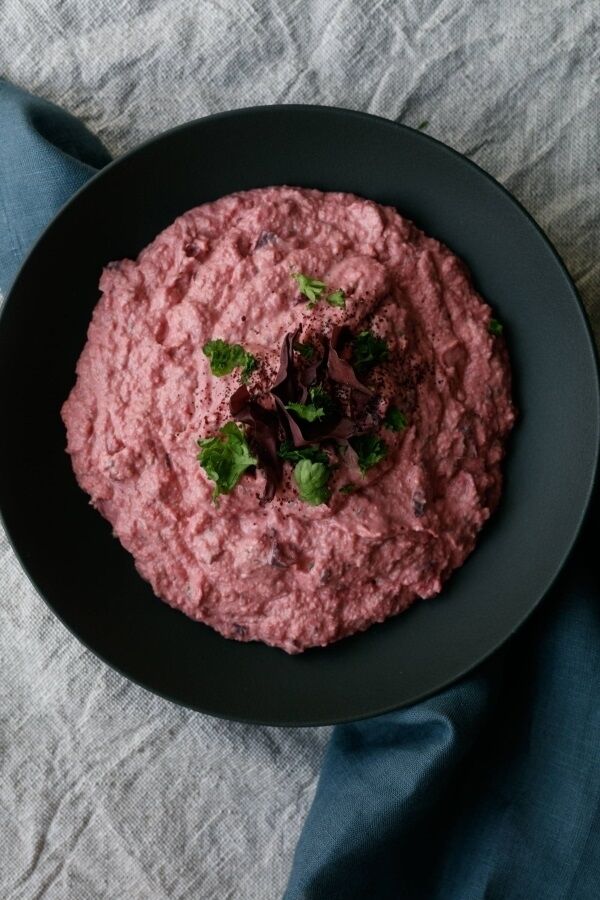
Hummus wasn’t something we ever ate when I was growing up in Currabinny, but we grew beetroot in the garden which was scrubbed hard and then boiled, allowed to cool and then either pickled in spicy vinegar or sliced into a salad.
Adding it to hummus with tiny flakes of salty dillisk and with the background heat of horseradish makes for an earthy, sweet, salty and decidedly Irish twist to this middle eastern delicacy.
This recipe makes a good amount and will keep for around 5 days in the fridge.
If you are pressed for time you can use precooked beetroot (drained), the Ballymaloe brand one is really good.
Put all of the ingredients in a food processor apart from the horseradish, blitz until smooth and thick.
Scoop the mixture into a serving bowl and stir through the horseradish.
Then garnish with chopped parsley and seaweed flakes.




